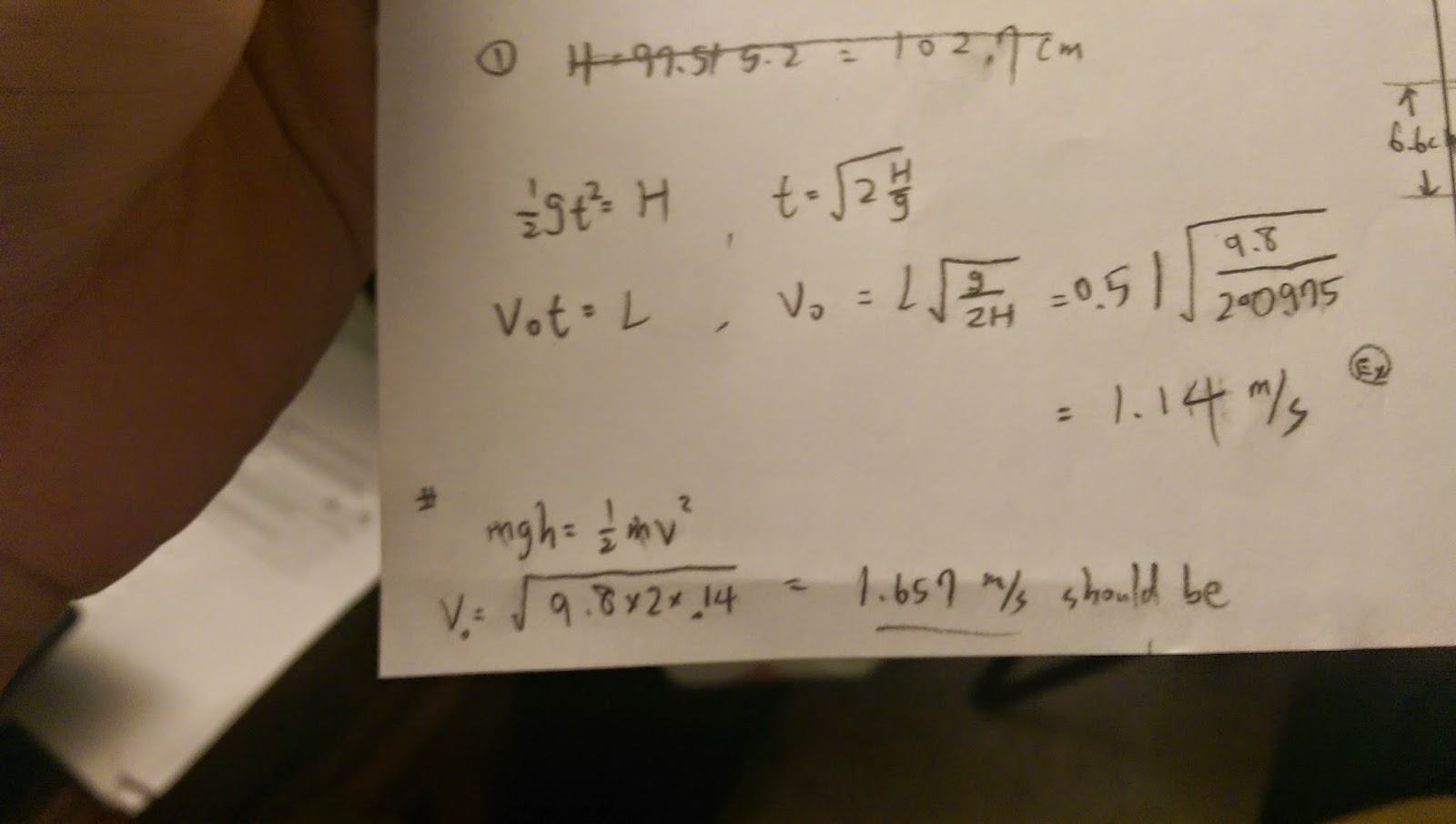Conservation of linear and Angular Momentum
Introduction:
We already do lots of different lab about inertia, then this one we set up like this
We will find the speed when the ball come out from the ramp
then calculate the angular speed should and see the experiment
Date and calculation:
First of all, we find the speed when it come out from the ramp
those are the date we measure and we do the calculate the the speed speed be and actually be.
we get 1.14m/s in the experiment and 1.657m/s from calculation
they are lots of different because the friction do too much work on the ball.
and then we use Vo=1.14m/s to find the angular speed it should be
we get 1.74 rad/s for the final angular speed
and 1.572rad/s from the logger pro as the figure
Conclusion:
The error between experiment and calculation is 9.6%
The result is close enough to said that the angular momentum from ball and the final momentum
is the same










































